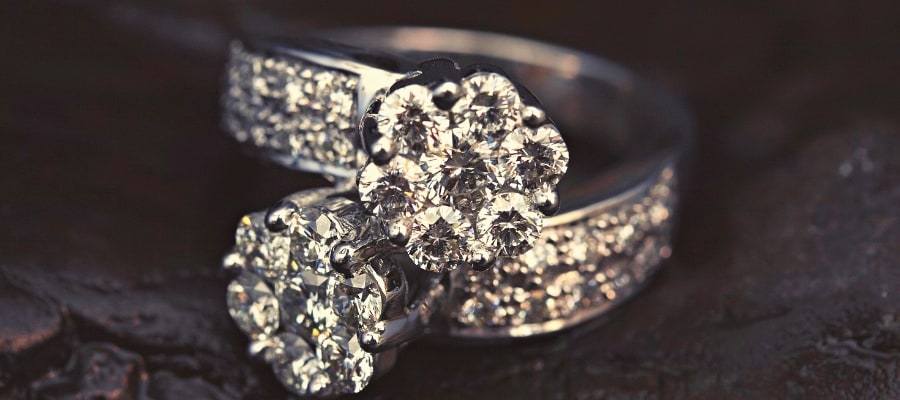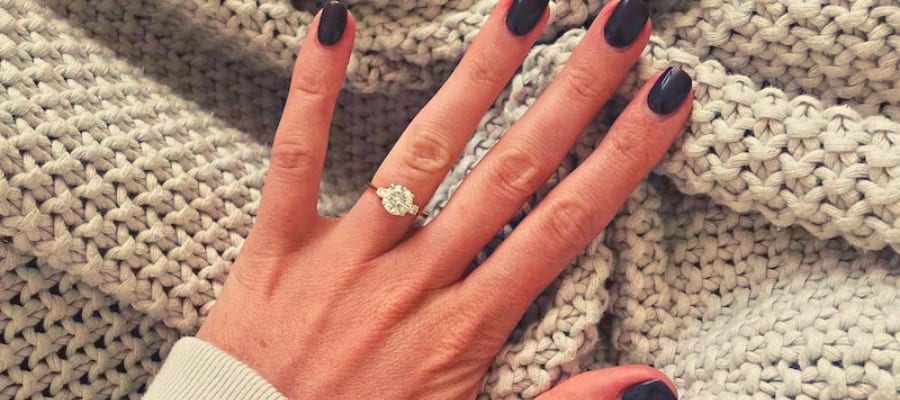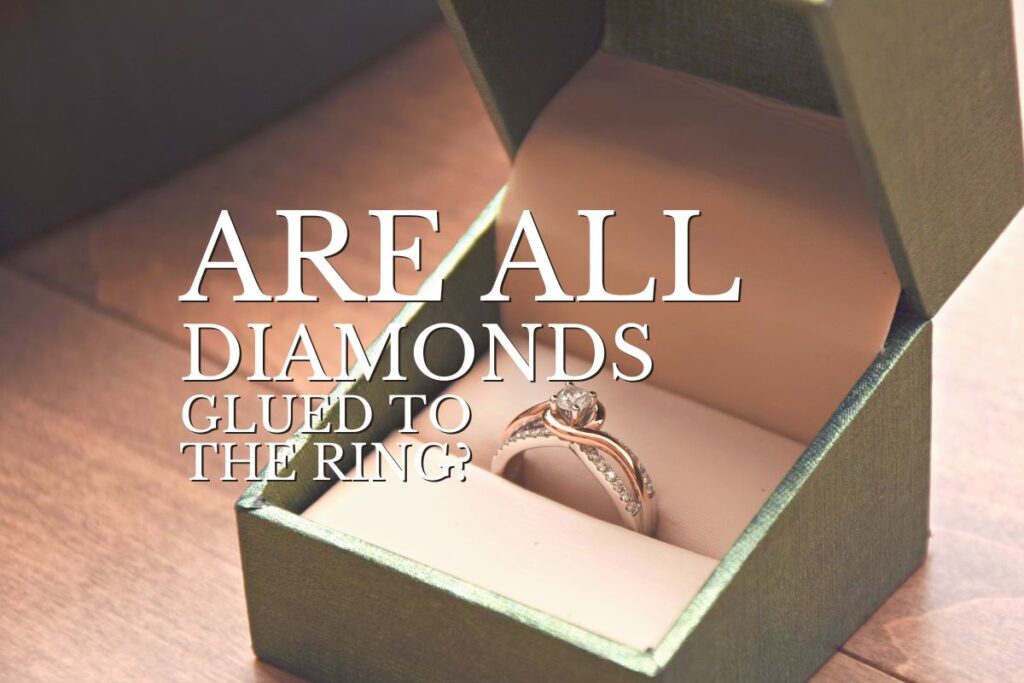When you look at your diamond ring, you may wonder what exactly is holding that tiny gemstone in place. There has to be some sort of adhesive, right?
Not all diamonds are glued to the ring band. The proper way to secure diamonds in place is with prongs, which are tiny metal strips made for that purpose. A diamond can be secured by four to eight prongs.
In the rest of this article, I’ll discuss why jewelers use prongs instead of glue to secure diamonds to ring bands. I’ll also talk about what to do if the prongs are damaged and the diamond falls out, and what glued-on diamonds mean if yours is glued on.
How Are Real Diamonds Attached To Rings?

It’s easy to wonder how tiny pieces of metal can secure a diamond in place fully. Look at the prongs on the diamond itself; it doesn’t look very secure at all, does it?
Why would anyone sell rings with expensive gemstones like diamonds that are secured in a way that doesn’t look very secure?
Prongs are shaped to the diamond, then curved inward at the top to secure the diamond in place. These prongs are used to secure and protect the diamond’s most fragile corners from taking damage as time goes on.
Metal prongs are more durable than they look. They are first set in the band to create the space to hold the diamond in place, and when the diamond is centered, they are bent and tightened towards the diamond’s center using parallel-jaw pliers.
What Does a Glued-On Diamond Mean?

If prongs are the only reliable and secure way to hold a diamond in place, why do some people have their jewels glued onto their rings?
When a “diamond” is glued onto the ring band, there are usually three possible explanations:
- The diamond is a fake.
- The ring has had previous damage done to it.
- The prongs have not been set correctly, and it was hastily repaired.
If a jeweler tests the diamond and it is real, you could ask if they do repair services and get the ring fixed then and there if they can adjust the prongs onsite. If they tested that the diamond is not a fake, you may have a costume ring, which is a cheap ring that’s designed to be worn once with a costume.
You can also test if your diamond is real by submerging it in water. If the diamond floats, it’s fake diamond, and if it sinks, it’s authentic. Keep this in mind also: Diamonds are not set in cheaply made materials.
While it isn’t the end of the world, if the diamond ring you have is a fake, you can’t put a price on love. However, it would be good to know if you did end up receiving the short end of the stick so that you can consider getting a refund on the ring.
How To Identify a Real Diamond

While the diamond is out of the setting, there are ways you could test it and see if you have an authentic diamond or if you were sold a fake. Before you take a trip to the jeweler, try these methods at home.
Drop the Diamond In Water
Grab a cup and fill it up to about three-thirds, then drop the jewel in. Wait about five minutes or so and locate the gem in the water. If it’s floating, you’ll know it’s a fake because real diamonds sink. You would want to use a clear glass of water to see the diamond clearly.
Use a Magnifying Glass
When you put a diamond up to a magnifying glass, look for imperfections such as chipping and some natural indentation. If you do not see any imperfection whatsoever, your diamond is most likely a fake.
However, keep in mind that some very expensive diamonds are created to have no imperfections whatsoever. As such, you shouldn’t rely on this method alone.
Place Diamond on Newspaper
Before you drop the loose diamond on a newspaper (or something with words enclosed) ensure it’s clean. Then place it on some words and see if you can read any words through the diamond.
If you can, you have a fake stone. Real diamonds reflect light in multiple directions, leaving no light to be seen on the other side and making it impossible to make out any words.
If you find you have a fake diamond, the best thing to do is go back to the original jeweler with the receipt and get a refund or receive a real diamond. This may only work if you bought the ring from a reputable jeweler and not through a private vendor.
However, if you have an authentic diamond that is still falling out of the setting, this next section should help you solve this problem.
What To Do if the Diamond Keeps Falling Out of the Ring

If you do have an authentic diamond, and you find your ring is still falling out of the prongs, you don’t want to keep going back and paying the jeweler the repair fee to keep fixing the ring.
If the diamond is still falling out after several repairs, it is best to add more prongs or replace the prongs entirely. Adding or replacing the prongs will help the diamond stay in place.
Prong replacements are fairly cheap, depending on the ring. If you’re having problems with only one prong, the jeweler can replace that specific prong.
However, Long’s Jewelers, a reputable jewelry company, states, “If two or more of your prongs are broken, the entire head may need to be replaced to ensure your diamond doesn’t get lost.”
If you are only looking at one prong being loose, you could fix it yourself if you have the proper knowledge on how to replace them. Here is a Youtube video outlining a step-by-step process you can use to fix the prongs yourself.
While you could reset the prongs yourself, the best option is to take the diamond and the ring to a professional so they can properly fix the prongs. You don’t want to mess up the ring.
Final Thoughts
Diamonds are not glued to any sort of base on the ring. Instead, they will always be secured by some sort of prong base and will be curved inward to properly hold the diamond. If a diamond somehow ends up falling out, you never want to glue it back in because adhesives do not hold forever.
Your ring is special, so it is preferred you take your diamond to a professional and have them fix the ring for you instead of doing it yourself. That way it will be properly fixed, and you’ll be guaranteed the diamond won’t fall out.
If you found this article useful, make sure you save this pin below to your Jewelry board.


